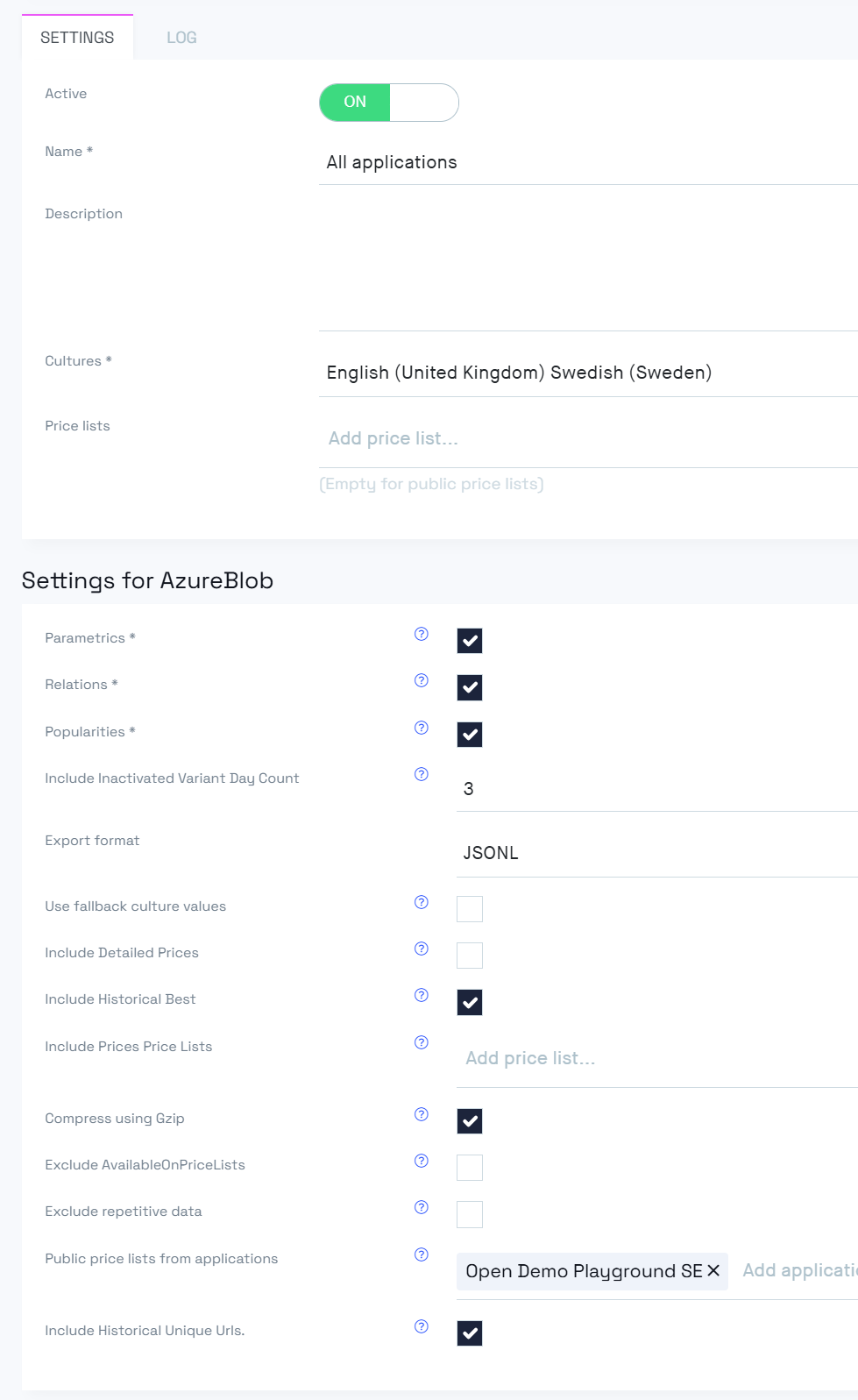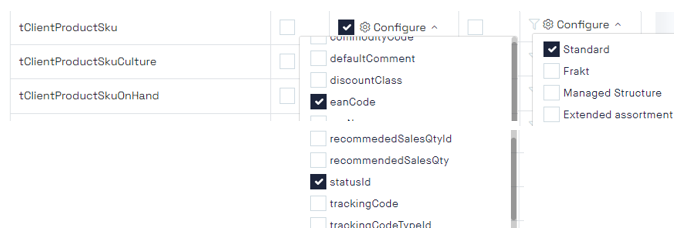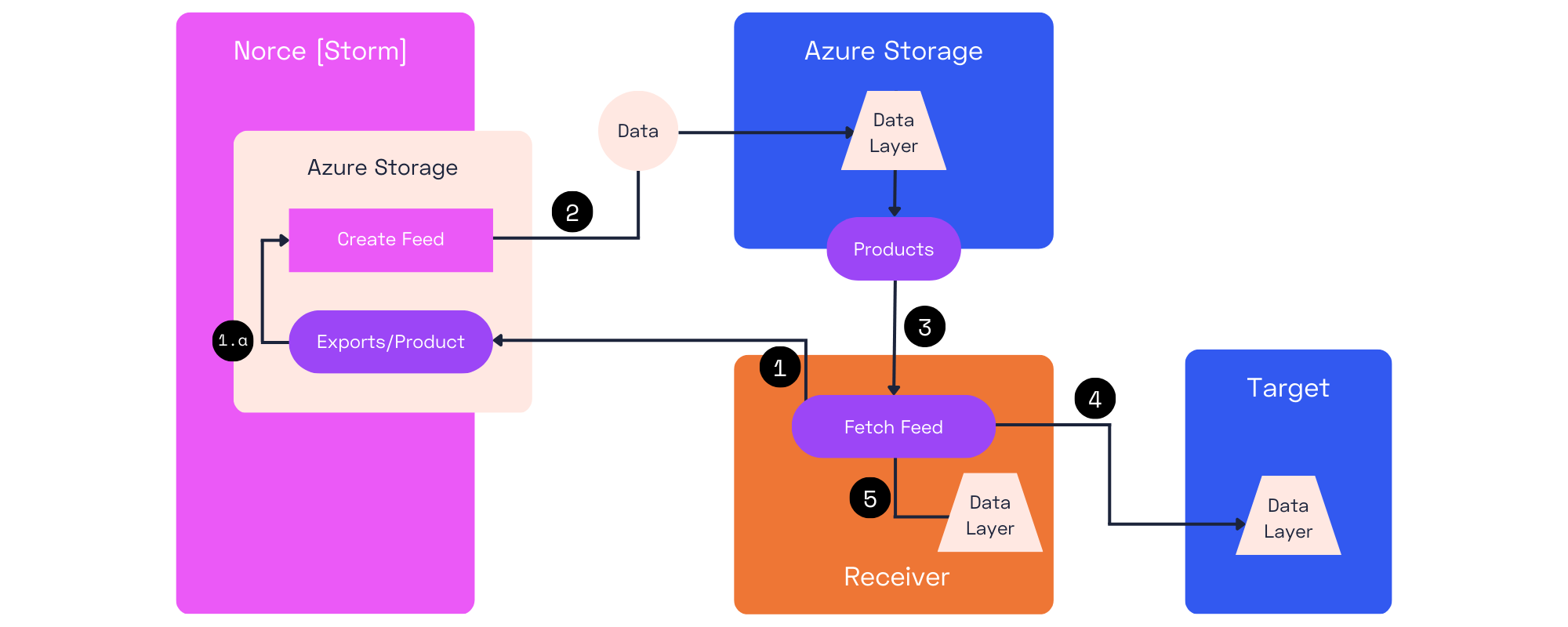Overview:
A Product Feed Receiver is a service that fetches product data from Norce Commerce, processes it, and delivers it to your target systems (such as search services or marketplaces). This guide explains how to configure, trigger, and consume product feeds, including full and delta updates.
A Product Feed is a structured export of product data from Norce Commerce, designed for integration with external systems. Feeds can be full (all products) or delta (only changed products).
The receiver is responsible for:
- Triggering feed creation via the Norce API.
- Polling for feed readiness and downloading the data.
- Mapping and delivering the data to target systems.
- Handling errors and monitoring feed status.
Configuration options include:
- Key: Unique identifier for the feed.
- Culture: Languages included in the feed.
- Price lists: Determines which prices are included. Leave out for all public price lists.
- Parametrics Add parametrics to product export, default is false
- Relations Add product relations to product exports, default is false
- Popularities Add popularities to product exports, default is false
- Include Inactivated Variant Day Count If a number above zero, a variant/product that has been removed from the price list will still be included but without a price, this makes it possible to actively disable variants that are removed from the assortment, number of days (24 hours) from inactivation the variant can be fetched, max value is
5 - Export format Choose which format the channel should be, default is
JSON, for larger catalogs we recommend to use Json lines (JSONL), a convenient format for larger collections. - Use fallback culture values If true, the export will return default culture on active products that do not have text for the specified culture
- Historical Best Price If set, the historical best price for the past 30 days + 1 the last price change before that, for each product will be returned in the
historicalBestPricefield. This is the best price based on public price lists. Historical Best price can be returned in both Product Feed and Product Status Feed. - DetailedPrices If set, all prices will be returned in the
detailedPricesfield for the price lists specified inDetailedPrices Pricelists. - Detailed Prices Pricelists If
DetailedPricesis set, this field specifies which price lists should be included in thedetailedPricesfield. If left empty, prices for all public price lists will be returned. Detailed prices can be returned in both Product Feed and Product Status Feed. - Compress using Gzip Compress the feed response using Gzip.
- Exclude AvailableOnPriceLists Removes the
AvailableOnPriceListselement that takes much space in larger feeds. - Exclude repetitive data Removes repetitive data on feeds. For example metadata like groupname, or currency codes. Makes the feed smaller and simpler to manage.
- Public price lists from applications Choose additional applications to include to feed. When used, the feed will add the chosen applications all public price lists and add them to the feed export. Each sales area will get their best price evaluation.
- Include historical Unique Urls When enabled,
historicalUniqueUrlsare added to the feed.

To find the inactive products, check if "prices": [] (is empty) or if "status": "inactive" on the variants.
To use the Product (Delta) and ProductStatus (Delta) types below, you must set up delta table configurations, otherwise no changes will be tracked.
To track changes of your products, you must enable "delta tables" under Settings → Client → Settings (last checkbox under “Products”).

Unclick the arrow to use the checkbox.
Lastly, you must decide what changes in your products you want to track.
Under Products → Settings → Delta Configuration you can modify the settings to determine which changes will be tracked.
Norce has about 30 data tables with many different fields that can be tracked for changes. Be sure to only enable the changes you actually need, as this can significantly impact the performance of your solution.
Delta configuration can be complex, so we have provided an example with screenshots and detailed explanations.
| Name and entity | Description | Snapshots |
|---|---|---|
Product and SKU information (tClientProductSku, tProductCulture) | In this example, we are not interested in new products, that's why “on insert” is disabled (they can wait on the full feed) But when an existing product is changed on the swedish name or description. Or when the product status (statusId) or EAN code (eanCode) is changed, we want the delta feed to notice it. But only for the standard products |   (Right click and open image in new tab) |
Price information (tClientProductSkuPriceList) | If the product gets new prices or if the price is changed we need to get it in the feeds as soon as possible. But not all Price lists are tracked, only the Standard SE. |  (Right click and open image in new tab) |
Onhand information (tClientProductSkuOnhand) | When the onhand value (onHandValue) is changed or added to the European Central warehouse, it should be tracked. |  (Right click and open image in new tab) |
Product flag information (tProductFlag) | If the flag "Discount 10%" or "Discount 20%" is added (On Insert) or changed (On Update), it should be tracked. |  (Right click and open image in new tab) |
Read more about what all the delta configuration settings means here.
It is your responsibility to schedule the full and delta exports, this gives you control of when and also of tracking any issues that might come up.
A recommended schedule is:
- Full Schedule: Once a week or once a day
- Delta schedule: 2-6 times a day
- Status schedule: 1-4 times an hour
Product Feed supports four types of feeds:
Product(Full), full data feed.Product(Delta), only changes.ProductStatus(Full).ProductStatus(Delta), only changes.
The Product feeds contain the largest amount of product data and are used to populate search services with content, images, parametrics, prices, and other information. This feed returns all products from the product catalog defined in the feed settings, such as all active and expiring products for a specific price list in a particular language.
Just as Product Full this contains most of the product data, but delta requests returns only changed products from a specified time. This is specified under * Products -> Settings -> Delta Configuration* in the admin tool, here.
The delta is triggered with a request body containing :
channelKey: This is mandatory and specifies which product feed is executed.deltaFromDate: This is a timestamp (UTC) that specifies from when all changed products should be included. If this is not specified, a full product feed will be returned instead.
Set the deltaFromDate to a time a bit further back than the last successful delta export, to compensate for the actual processing durations.
For example, if the last successful delta was triggered 10 minutes ago, and the average duration is about 1 minute, set the deltaFromDate to 11 minutes earlier than now.
Product Delta feed is not triggered on changes to price/price list and onhand changes. Use the ProductStatus feed for these changes.
The ProductStatus feed contains a smaller set of information, mainly price, availability, flags, and supplier information. This data usually changes more often than other information and can be fetched and updated in the target system.
The request body for this feed contains the same information as Product.
Product Status feed is only triggered on changes to price/price list and onhand changes.
Norce sends the data to an endpoint that is reachable by you over http(s).

- The feed is triggered by the Receiver.
- The response includes a
JobKeyand a status code. - If status code is:
- Success: the feed is created.
- AlreadyInProgress: a feed of the same type is already being created, this request is ignored.
- NoData: a feed could not be created because no products or changes were found.
- Failed: an internal server error occurred in the Product Feed service when creating the feed. See logs in admin for more information.
- The response includes a
- The feed is created in the Azure storage. The feed can check the api for the status on the job, calling ChannelService/api/v1/jobs/job wait and poll until the status is changed to
CompletedInExportFeed - The Receiver downloads the new Product data from an HTTP(s) endpoint in Azure. More information about the Azure file service API can be found here.
- The Receiver applies mappings and business logic (if needed) to the data and creates or updates the target system(s).
- (Optional) The receiver can store the
JobKeyin their own logs if needed. The data is accessible for some time. - (Optional) Listen to
ExportDeliveredEventinstead of polling the job (1.2)
The receiver can listen to the Event called ExportDeliveredEvent instead of asking the endpoint when the export is ready. Read about using the Norce Commerce Event here: Using Norce Event
The Receiver triggers the feed creation by calling ChannelService/api/v1/exports/product or ChannelService/api/v1/exports/productstatus, excluding DeltaFromDate, or having it set to null.
{
"channelId": "[the channel key]"
}The result is the full catalog according to Norce at the specific time of export. This may require that you should deactivate all other products in the target system and populate it with the new catalog.
The Receiver triggers the feed creation by calling ChannelService/api/v1/exports/product or ChannelService/api/v1/exports/productstatus, with a DeltaFromDate, that defines from when the changed products should be included.
{
"channelId": "[the channel key]",
"deltaFromDate": "2020-10-01T14:43:19.210Z"
}The result is the list of modified products in the catalog. This feed is intended to update only these specific products in the target system, leaving the other products unchanged.
Whenever possible, it is recommended to use ProductStatus as its size is smaller and thus faster to process.
Feeds that are older than 90 days are removed, but until then you can access them at https://stormfeedsstage.blob.core.windows.net/exports/[JobKey] for the lab environment or https://stormfeeds.blob.core.windows.net/exports/[JobKey] for the production environment.
This can be useful for reviewing past data and checking how it looked at a specific time.
Additionally, an example feeds are provided at
During the development phase, use the public feed URLs for quick access to some sample data (see above).
If you have real data from the client in Norce, set up a product feed and create a couple. In the log, you will find JobKeys that you need to access and download data. The result is the list of modified products in the catalog. This feed is intended to update only these specific products in the target system, leaving the other products unchanged.
Whenever possible, it is recommended to use ProductStatus as its size is smaller and thus faster to process.
You can access your test feeds at https://stormfeedsstage.blob.core.windows.net/exports/[JobKey] for the lab environment or https://stormfeeds.blob.core.windows.net/exports/[JobKey] for the production environment.
Additionally, an example feeds are provided at